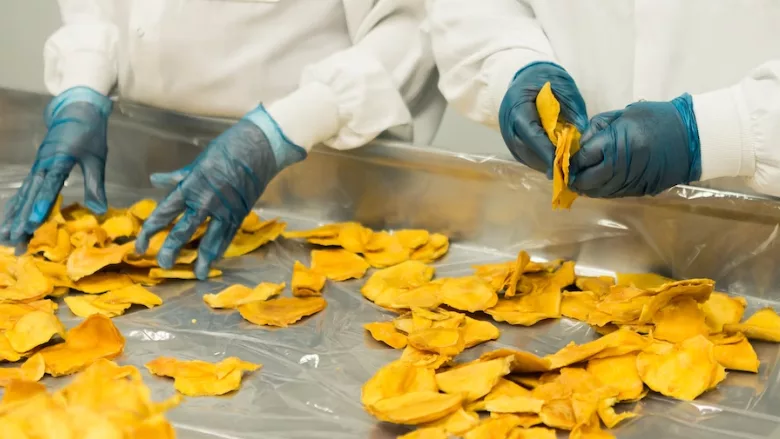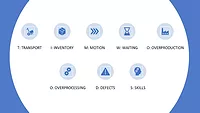The Value of Mistake Proofing

Credit: No Revisions via Unsplash
People make mistakes—more often than we might like to think. Studies have shown that no matter how well-trained a worker is, or how well-maintained the equipment is, errors still occur. Tasks are forgotten, and equipment breaks. Standard work and "one right way" can help reduce errors.
Mistake proofing, also known by its Japanese equivalent, "poka-yoke," is a method used to reduce or eliminate errors, or to make those errors immediately obvious. Ensuring that non-conforming product is never created—or at least never arrives at customers' doorsteps—is invaluable in the food industry. Reduced downgrade, less rework, and decreased out-of-specification product are all benefits of mistake proofing.
Mistake proofing should be implemented when:
- A step in the manufacturing process relies on the worker's attention, skill, or experience to be completed or can impact the product's safety and quality
- Worker turnover is frequent, and constant training is required
- A product or process is transferred from one worker to another and can impact speed or output
- A minor error can develop into a major problem later in the process or product
- The consequences of an error are expensive, dangerous, or insurmountable
- Failures or errors frequently occur.
Process/Procedure to Mistake Proof
First, review a process flow chart. Do not re-invent the wheel. Do you have a value stream map from previous operational efficiency or continuous improvement teams? What about the flowchart that is used to create the hazard analysis in your food safety plan? Do you have any piping and instrumentation diagrams (P&IDs)? Start by reviewing each step on the process flow and think about where human errors could happen or have happened in the past. Make a list and determine the priority. Some teams like doing a Failure Mode Effects Analysis (FMEA)1 at this step to numerically determine the most important areas on which to focus. However, you prioritize the issues, determine the potential errors of focus. Then, determine the root cause of those errors. What is the source?
For each error, think of the actions, instrumentation, automation, and/or practices that could be put into place to eliminate the potential for that error. Consider three different categories of solutions:
- Elimination—Eliminate the step or practice that causes the error.
- Replacement—Replace the step with a step that is error-proof.
- Facilitation—Modify the step so that the correct action is easier or takes less effort than the error.
- Detection—If you cannot make the error impossible, then make the error easier to detect, thereby minimizing the repercussions of the error.
- Inspection Method—Multiple people should review and sign off to add "another pair of eyes." However, be careful that this does not become a rote practice that leads to "pencil-whipping" documentation. I can share many anecdotes where multiple people signed off that a product was correct, paperwork was completed, and labeling was finalized according to procedure; however, out-of-specification product still made it to the next step in the process or to the customer. Consequently, it is important that people do not sign off without first critically analyzing the product or process. Automation can assist; for example, vision systems and auto-detection cameras. Color-coded systems are also common. In the food industry, gloves are blue, and bandages are metal detectable so that they can be easily seen or detected if they fall into the product. In an allergen control program, ingredients with allergens are labeled with large, color-coded placards. Visual shadow boards show where everything should be stored, so a quick glance reveals that a box knife is missing.
- Setting Function—This includes methods where a parameter or attribute is inspected. Manual or automated inspection can be used to check a physical characteristic, such as temperature or chemical analysis (pH, moisture, etc.) or organoleptic characteristics. Another example is weight with a checkweighing system or removal of a quantity of finished product to be verified on a calibrated scale. Sensors like limit switches or infrared sensors could be appropriate.
- Regulatory Function—This includes warnings or controls that signal to the worker that an issue or error has occurred. For example: bells, buzzers, or lights that signal when a step has not been completed correctly. For example, the equipment could be on load cells, and if an ingredient is not added (meaning the correct weight is not added), a bell or buzzer could signal, indicating a potential issue for the worker to investigate and correct before continuing to the next step or ingredient. When the metal detector detects metal, it stops, lights come on, buzzers sound, etc., notifying the worker of an issue. Another regulatory function could be a control function; for example, after adding an ingredient, the worker must confirm ingredient addition on the human-machine interface to indicate that the next step in the process can begin.
After determining the most appropriate method of removing the error or making the error easier to detect, put in place and measure the success or failure. Remember, if it does not work the first time, try again. The Deming Circle or PDCA (plan, do, check, act) cycle is a circle. Celebrate your successes and address your failures. Then, pick your next set of errors and work on those.
Looking for quick answers on food safety topics?
Try Ask FSM, our new smart AI search tool.
Ask FSM →
Team Sport and Communication
Use your mistake proofing exercise as a culture builder. Encourage workers to share ideas on how things can be made better for them. Do not discount your investments in employees and their ideas. In addition, ensure that positive communication is part of your culture. Praise workers when they speak up about an issue. A positive culture allows your workers to admit when they make a mistake instead of hiding it. Encourage communication so that the error can be dealt with, and so you can determine how to prevent it from occurring again (continuous improvement).
Takeaway
Lean and continuous improvement is a culture that must be embraced by all members of management. Mistake proofing/poka-yoke is another tool in the continuous improvement toolbox. The central premise is to prevent errors or make errors blatantly obvious so that additional product is not impacted and customers do not receive out-of-specification product.
Mistake proofing can also require new equipment, instrumentation, or automation. Remember to frame your conversation in return on investment—how much money can be saved in labor, reduced downgrade, or improved overall equipment effectiveness. Also remember that, many times, solutions do not require capital investment and can be low-cost and just as effective. Good luck on your journey!
- Atkins, Steven and Marcia Hagen. "An Integrated Approach to Food Quality and Safety: A Case Study in the Cookie Industry." Food Safety Magazine. April 1, 2012. https://www.food-safety.com/articles/5529-an-integrated-approach-to-food-quality-and-safety-a-case-study-in-the-cookie-industry.









